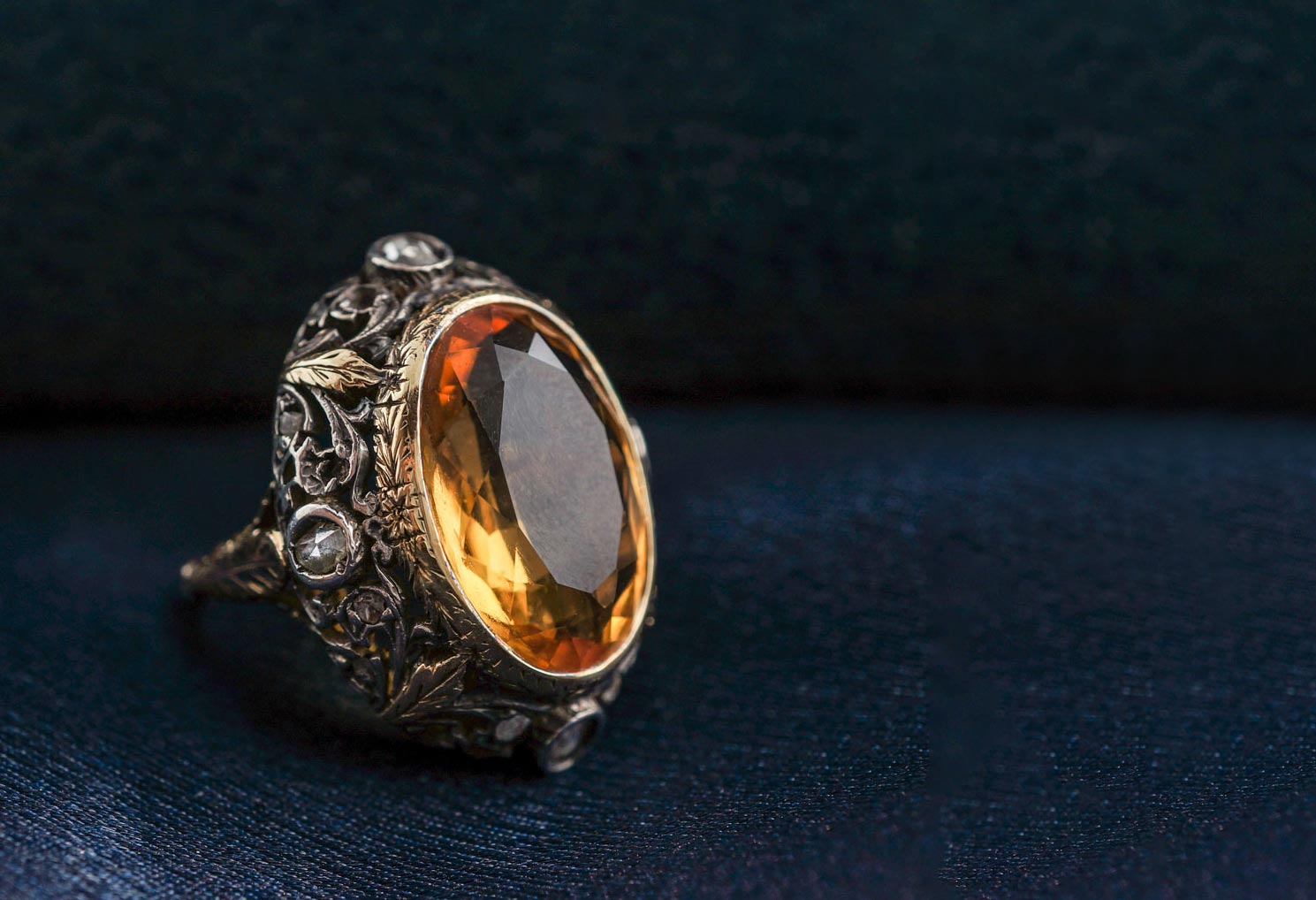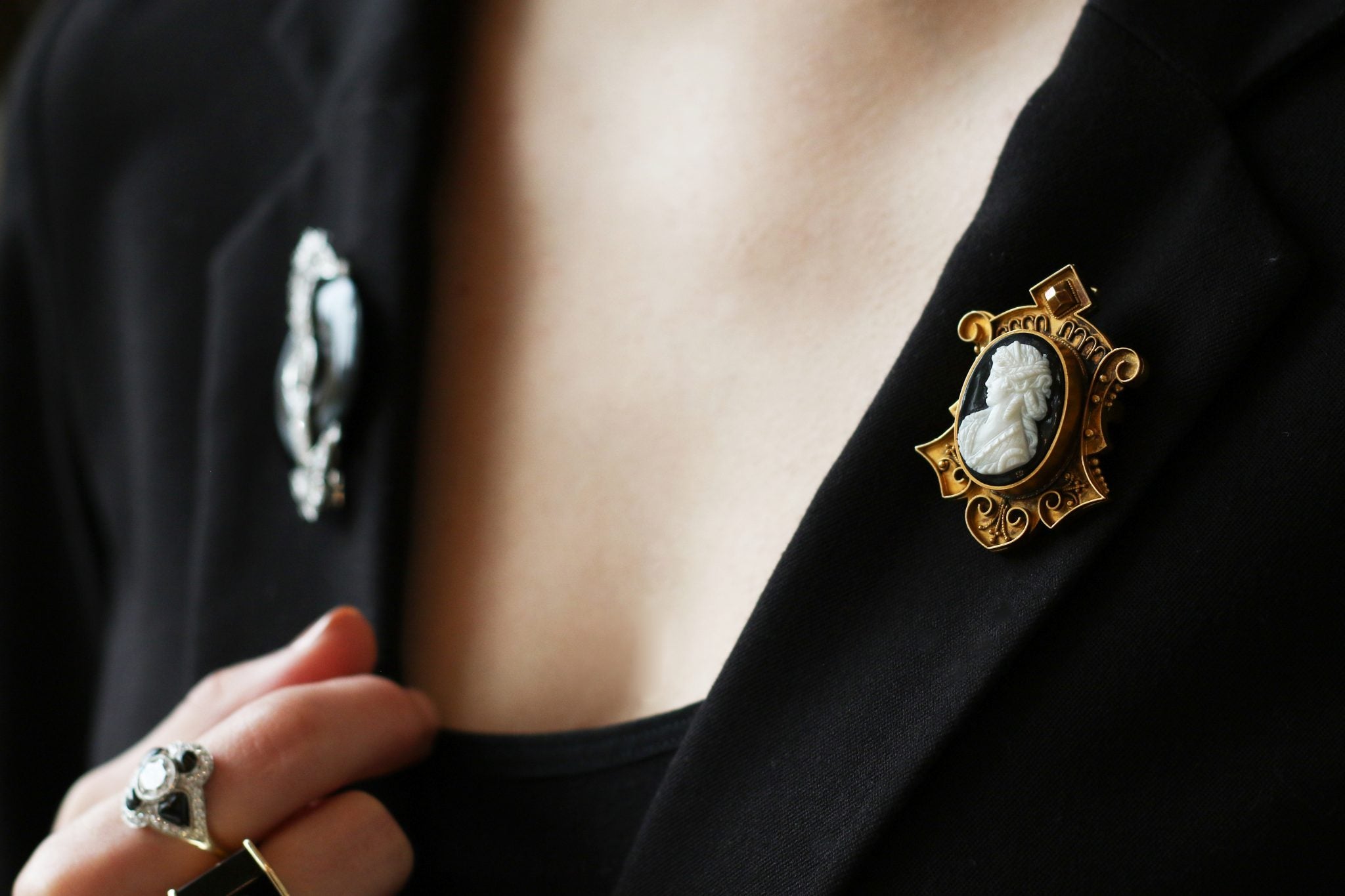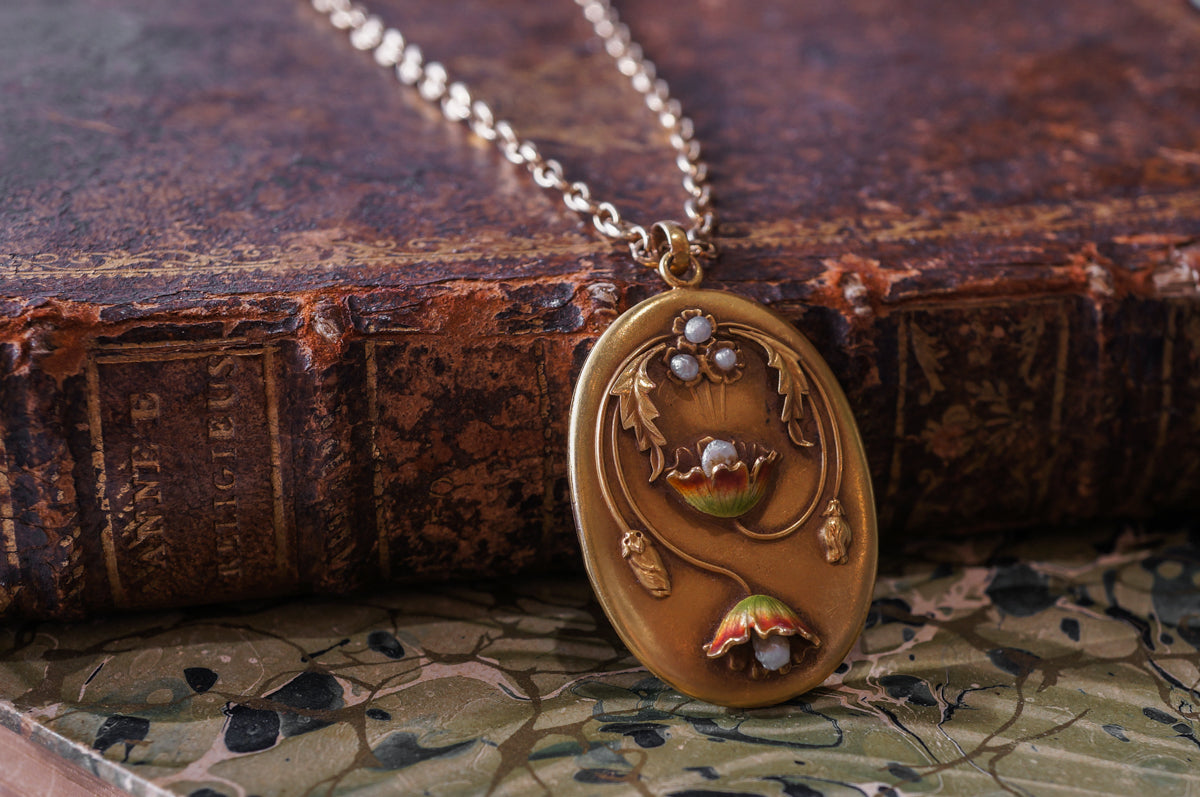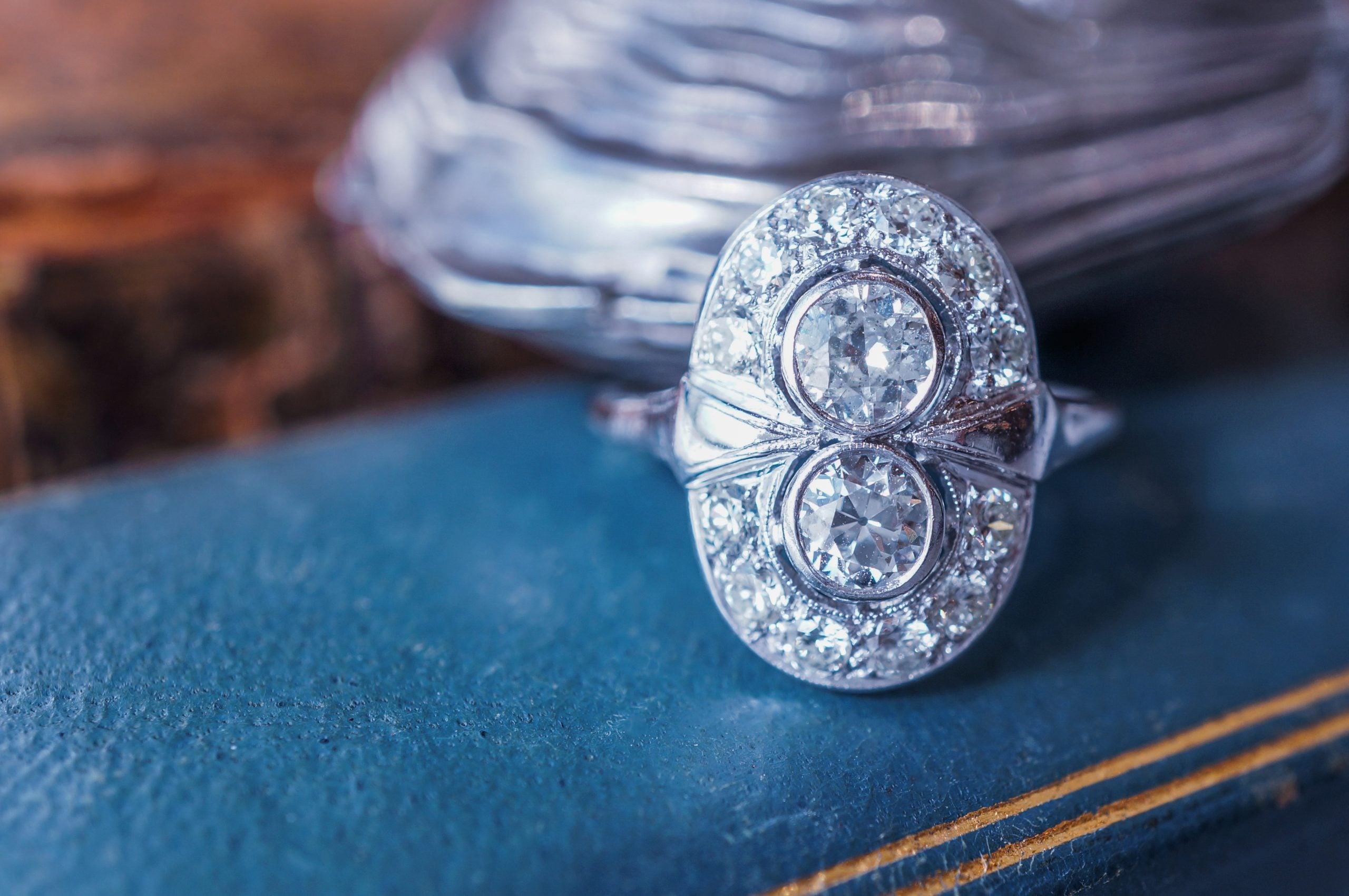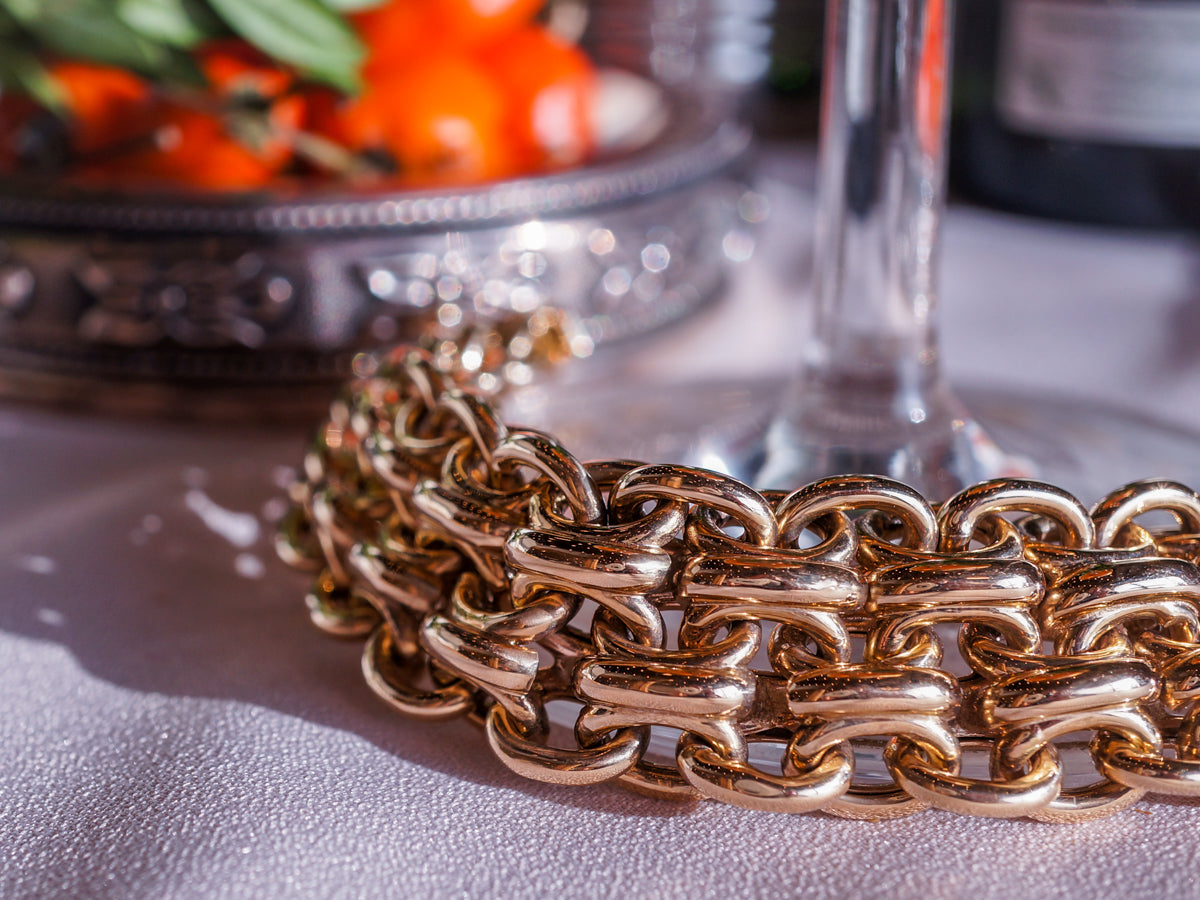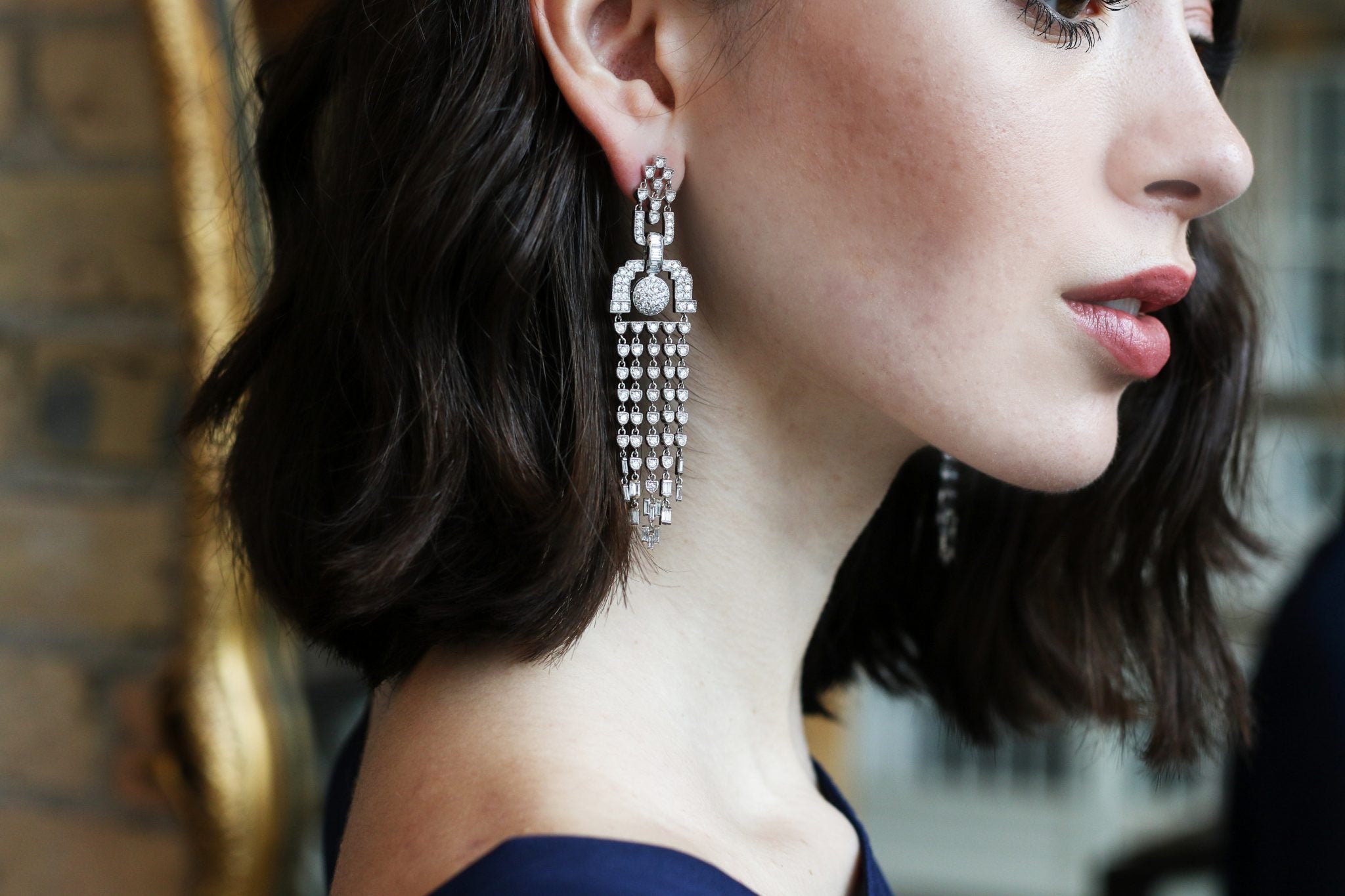
-
ANTIQUE JEWELRY
We call many pieces in our collection antique; technically to be an antique it needs to be made over 100 years ago. Victorian and Edwardian rings currently fall into the antique category. At Filigree Jewelers we do our best to ensure that each antique ring is ready for daily wear. Please keep in mind that rings with an age of over 100 years old should be considered as precious as they are and should be worn slightly more delicately.
-
VINTAGE & ESTATE
Most of our current collection falls into one of two categories; vintage or estate. Vintage rings were constructed and worn during the Art Deco, Retro, Mid-Century and Modern time periods. Filigree Jewelers Art Deco diamond ring collection spans from 1920 to 1940 and makes up the majority of our ring collection. The Retro time period is dated from 1940 to 1950. The Mid-Century time period items were constructed in the 1950’s and 1960’s. Any jewelry made after the 1960’s to present day is considered a modern estate piece if it is previously worn.
-
ANTIQUE STYLE
If you see a piece in our collection titled “antique style” it often means that we have taken antique or vintage gemstones and recreated some of our favorite designs using styles and techniques that were popular in the Victorian, Edwardian and Art Deco eras.Although our focus at Filigree Jewelers is on antique, vintage and estate pieces; we often find items of jewelry that are beyond restoration. We relish in re-purposing the gemstones and diamonds into jewelry that evokes a vintage or antique feel. It is luxury up-cycling at it’s best.Even some of our modern pieces are constructed with vintage gemstones!

-
As the oldest era of jewelry that you will find at Filigree Jewelers, Georgian jewelry is very scarce in our collection. Georgian Jewelry is dated between 1714 and 1837. The name derives from the reign of the Hanoverian Monarchs in the UK all successively named George I through the IV. Georgian jewelry was entirely handcrafted and is known for it’s floral, organic and romantic motifs.
-
Georgian jewelry is usually constructed in 18 karat yellow gold and sterling silver. The gemstones from the period were roughly faceted and usually mismatch as jewelers used whatever materials they could get their hands on. Garnets, amethysts and topaz were readily available and often used in Georgian jewelry. Diamonds were typically set in sterling silver and backed (foil backed) in gold. Georgian jewelry is not recommended for daily wear.
-
The Victorian period is one of our favorites at Filigree Jewelers. Named after Great Britain’s beloved Queen Victoria who was an undeniable romantic. Queen Victoria’s reign was the second longest of any British monarch in history, spanning from 1837 until her death in 1901. Victoria’s long rule and beloved status meant she influenced many areas of public life including politics, social mores and fashion. Common people now had the images needed to emulate Victoria’s style and the industrial revolution gave them the wealth and products to purchase their own versions of it. Up to this point essentially all jewelry was being completely handmade with expensive 22k gold, 18k gold and silver. With rapid advances in technology, machines could now cut & stamp metal and make chain and electroplated gold onto base metals.
-
The proliferation of factories meant metalworking in 14 karat, 10 karat, and even 9 karat gold could now be performed on a mass scale with affordable materials. Suddenly jewelry was accessible to almost everyone. Victorian jewelry mimicked the Queen’s style and collection: from snake rings and orange blossom motifs to mourning jewelry. Mourning jewelry was one of the iconic styles steaming from the Victorian period. When Prince Albert died in 1861, Queen Victoria went into a prolonged period of grieving and Victorian society followed her lead. Black clothing and black mourning jewelry came into vogue. Jet (black fossilized wood) and tortoise shell were some of the materials used because their dark colors reflected the theme of loss. Lockets filled with photo miniatures and locks of hair became popular mementos.
-
Queen Victoria’s son, Edward VII, took the throne in 1901. Society was at the height of its elegance and sophistication: it was during this time that advances in metal fabrication finally allowed for the use of platinum in jewelry (which still remains extremely popular today). This advance makes jewelry dating much easier – if a piece is made with platinum, we can be fairly sure that it was made in the early 20th century or later. In addition, it was still common practice for jewelers to back platinum pieces with gold until 1910 or so, making dating even more precise. Because of the strength of platinum, its use allowed jewelers to produce more intricate, detailed pieces. Some Edwardian engagement rings are so detailed it appears that the diamonds are set in lace instead of metal. Jewelry from the Edwardian period was light and delicate, and using as many diamonds as possible in a design was essential.
-
The overall style of the times was light, feminine, and airy. Women commonly wore white, white, and more white. Diamonds were the gemstone of choice during the time, but we also see sapphires, aquamarines, and most notably, electric green demantoid garnets from Russia, which are very rare to find in larger sizes. Additionally, a new type of decorative enhancement called “milgraining” was used extensively during this period. Milgraining involves a small border of platinum beads set around the edges of a piece of jewelry that adds a soft, elegant look. The end of the Edwardian era came abruptly with the start of World War I in 1914. Gone was the lightheartedness of the times: people began to hide or sell all their jewelry, and platinum became scare due to the demand for its use in the war effort.
-
As one of the shortest time period of jewelry making Art Nouveau jewelry also spans the Victorian and Edwardian eras. Art Nouveau jewelry is dated from 1895 to 1915 and emphasized handmade pieces. During an era when innovation was prized, reverting back to hand fabricating was considered passé. Art Nouveau jewelry focused on organic shapes such as insects, flowers and the female form. Many pieces of jewelry feature women in the nude, which was considered extremely risqué for the time period.
-
Moonstones, opals, sapphires, enamel work and pilque a jour were incorporated in some of the most amazing Art Nouveau pieces made. Pilque a jour is an enamel technique that is reminiscent of stainglass on a miniature scale. Jewelry designers during this period were considered some of the most highly revered artists of their time. Notable designers such as Rene Lalique and Louis Comfort Tiffany, son of the founder of Tiffany & Company, created masterpieces that are highly sought after in the antique jewelry industry.
-
Art Deco era jewelry refers to pieces created during the Art Deco movement, which flourished from the 1920s through the early 1930s. This period was marked by a distinctive style characterized by geometric shapes, bold colors and intricate designs. Art Deco pieces reflected these aesthetics through its design and use of materials such as platinum, diamonds, sapphires, rubies, and black onyx.
-
Symmetry and intricate craftsmanship are hallmarks of this style, with designs influenced by Egyptian motifs, Cubism, and the Machine Age. Art Deco jewelry exudes a sense of luxury, sophistication and glamour, representing the elegance and innovation of the Roaring Twenties and the Jazz Age.
-
The Retro Era jewelry movement is dated between 1935 – the 1950s. During and shortly after World War II, many resources and skilled labor in the fashion and jewelry world was in short supply. Creativity, however, thrives during times of limitation. Jewelry makers expressed their creativity in an innovative way, bringing forth a new culture of design – mounting smaller diamonds together to form pavésettings or combining semi-precious gemstones without diamonds to name a few techniques. Unconventional materials (enamel, wood, class, etc.) made its way to hallmark this new vision in jewelry. These economically sound choices in material use birthed an unforgettable aesthetic.
-
Gold was the metal of the era, but had to be used sparingly. Many jewelry lovers indulged in beautiful costume jewelry as it was cost conscious and a way to overcome the obstacles found during wartime. A cultural shift began – feminine self-expression and an appreciation of nature was an enlightening hallmark of the Retro Era.
Popular motifs of Retro jewelry include birds, ballerinas, embellished brooches, butterflies, diamond pave settings, colorful gemstone bracelets, snake / serpent jewelry and bold statement necklaces.
-
Mid-Century jewelry is dated between 1950 till 1960. During this time the economy was booming and so was the love affair of large diamonds. Major jewelry houses were advertising and appealing to the masses. DeBeers’ iconic “Diamonds are Forever” campaign created a buzz around diamonds again and every woman had to have one. Hollywood continued to play a large role in the increase of jewelry designs. The 1953 movie Gentlemen Prefer Blondes staring Marylyn Monroe and Jane Russell placated to the trend with the infamous “diamonds are a girls best friend” musical number. Marylyn Monroe was simply dripping in diamonds.
-
Designers such as Tiffany and Co, Cartierand Van Cleef and Arpels created massive diamond collars, bracelets and clip earrings. Platinum was once again available after World War II and was the preferred metal on choice in the 1950’s. Later in the period, textured, finished gold was gaining in popularity. Some of the most popular designs late in the Retro time period were rope gold necklaces, bark finished bracelets and whimsical animal brooches.
-
Post-war 1950’s was a time of great economic growth that lead to a rise in the upper middle class. Jewelry from the 1950’s reflected this new prosperity by featuring an abundance of gemstones set in flashy, dramatic designs, with a focus once again on diamonds, diamonds, and more diamonds. In 1948, DeBeers unveiled their still famous ad slogan “Diamonds Are Forever”, prompting an increased demand for diamonds in all types of jewelry.
-
The trends of 1950’s jewelry was similar to that of the 1940’s, but was often executed differently. Designs were now more light and textural, as opposed to the solid, high polished look of Retro jewelry. Engraved finishes and braided rope accents were popular design elements. Platinum once again became the metal of choice used for diamond jewelry, which still remains popular today.





